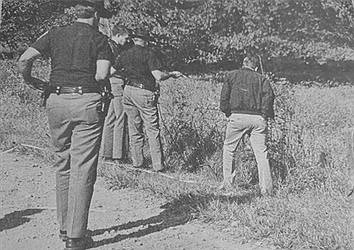Stay alert: tornado preparedness in Indiana
March 1, 2023 at 6:39 p.m.
While tornadoes are not frequent in Indiana, they are to be occasionally expected, peaking in occurrence between March and June. More than 1,400 tornadoes have been verified in Indiana since 1950, causing more than 5,000 injuries and 300 fatalities. In 2021, 20 tornadoes were recorded in the state, according to the National Oceanic and Atmospheric Administration (NOAA). The National Weather Service defines a tornado as “a violently rotating column of air touching the ground, usually attached to the base of a thunderstorm.” The NWS goes on, “Some tornadoes are clearly visible, while rain or nearby low-hanging clouds obscure others. Tornadoes develop extremely rapidly, and may dissipate just a quickly. Most tornadoes are on the ground for less than 15 minutes. Before a tornado hits, the wind may die down and the air may become very still. A cloud of debris can mark the location of a tornado even if a funnel is not visible. Tornadoes generally occur near the trailing edge of a thunderstorm. It is not uncommon to see clear, sunlit skies behind a tornado.”
It is valuable to review your personal emergency plan. Following are some quick tips from IN.gov regarding tornado preparedness:
Identify safe places to shelter. For optimal protection, choose basements, storm cellars and inner rooms away from doors, windows and outer walls.
If you live in a mobile or manufactured home, identify an alternative shelter such as a single-family home, designated tornado shelter or building built with reinforced concrete. Also, find the best route to this shelter and practice how long it takes to get there.
During tornado warnings, move to the lowest level of a sturdy building. It is best to go to a basement, safe room or storm cellar. If unavailable, use an interior room or hallway without windows.
Stay out of damaged buildings until they have been inspected and cleared by a building official.
During a tornado:
Move to the lowest level of a sturdy building. It is best to go to a basement, safe room or storm cellar. If unavailable, use an interior room or hallway where there are no windows. Cover your head and neck with your arms. Blankets, pillows and furniture can provide additional protection.
If in a vehicle, the best choice is to get out and take shelter in a strong building. If no building is available, stay in the vehicle, keep your seatbelt on, lower your head below the window and cover your head and neck with your arms and a blanket.
Do not take shelter at bridges. Strong winds can cause damage to the structure and cause it to collapse, you are not protected from flying debris and vehicles stopped there can block roadways and prevent others from reaching real shelter.
Mobile or manufactured homes are not safe during a tornado, even if they are tied down. You are more than 15–20 times more likely to die in a mobile home than a permanent structure. When a tornado watch is issued, residents of these homes should leave immediately and find a shelter with a strong foundation instead.
If possible, bring pets indoors and secure them to prevent escaping.
Latest News
E-Editions
Events
While tornadoes are not frequent in Indiana, they are to be occasionally expected, peaking in occurrence between March and June. More than 1,400 tornadoes have been verified in Indiana since 1950, causing more than 5,000 injuries and 300 fatalities. In 2021, 20 tornadoes were recorded in the state, according to the National Oceanic and Atmospheric Administration (NOAA). The National Weather Service defines a tornado as “a violently rotating column of air touching the ground, usually attached to the base of a thunderstorm.” The NWS goes on, “Some tornadoes are clearly visible, while rain or nearby low-hanging clouds obscure others. Tornadoes develop extremely rapidly, and may dissipate just a quickly. Most tornadoes are on the ground for less than 15 minutes. Before a tornado hits, the wind may die down and the air may become very still. A cloud of debris can mark the location of a tornado even if a funnel is not visible. Tornadoes generally occur near the trailing edge of a thunderstorm. It is not uncommon to see clear, sunlit skies behind a tornado.”
It is valuable to review your personal emergency plan. Following are some quick tips from IN.gov regarding tornado preparedness:
Identify safe places to shelter. For optimal protection, choose basements, storm cellars and inner rooms away from doors, windows and outer walls.
If you live in a mobile or manufactured home, identify an alternative shelter such as a single-family home, designated tornado shelter or building built with reinforced concrete. Also, find the best route to this shelter and practice how long it takes to get there.
During tornado warnings, move to the lowest level of a sturdy building. It is best to go to a basement, safe room or storm cellar. If unavailable, use an interior room or hallway without windows.
Stay out of damaged buildings until they have been inspected and cleared by a building official.
During a tornado:
Move to the lowest level of a sturdy building. It is best to go to a basement, safe room or storm cellar. If unavailable, use an interior room or hallway where there are no windows. Cover your head and neck with your arms. Blankets, pillows and furniture can provide additional protection.
If in a vehicle, the best choice is to get out and take shelter in a strong building. If no building is available, stay in the vehicle, keep your seatbelt on, lower your head below the window and cover your head and neck with your arms and a blanket.
Do not take shelter at bridges. Strong winds can cause damage to the structure and cause it to collapse, you are not protected from flying debris and vehicles stopped there can block roadways and prevent others from reaching real shelter.
Mobile or manufactured homes are not safe during a tornado, even if they are tied down. You are more than 15–20 times more likely to die in a mobile home than a permanent structure. When a tornado watch is issued, residents of these homes should leave immediately and find a shelter with a strong foundation instead.
If possible, bring pets indoors and secure them to prevent escaping.





